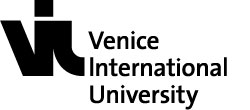S2212 Disability and Sustainable Design
Professors
Schedule
Course description
This course interrogates the goals, practices, assumptions, and epistemologies of sustainable design and development through the lens of critical disability studies.
We will begin by reflecting on the 2018 UN Flagship Report on Disability and Sustainable Development Goals and its assessment of the UN’s 2030 Agenda for Sustainable Development, which aspired to “provide a shared blueprint for peace and prosperity for people and the planet, now and into the future.” The 2030 blueprint outlined 17 Sustainable Development Goals (SDGs) that range from ending hunger and poverty, to ensuring healthy lives “for all at all ages,” to promoting “full and productive employment and decent work for all,” and to making cities “inclusive, safe, resilient and sustainable.”
This reflection will inform a series of questions that will be fleshed out through foundational readings in critical disability studies. How does evaluating the SDGs from the point of view of disability — cognitive, sensory, physical — inflect how we understand sustainability problems and the challenges we face in addressing them? How do critical disability frameworks challenge conventional and normative understandings of health, productivity, mobility, environmental sustainability, equality, and ability? What are the affinities and tensions between the entwined struggles for environmental sustainability and disability justice?
We will then articulate, debate, and synthesize different approaches to design thinking in conversation with disability — universal design, adversarial design, speculative design, participatory design, somaesthetic design, and more — and use that synthesis to conceive and develop sustainable design interventions in specific contexts, such as VIU’s campus and the city of Venice.
Learning Outcomes
At the end of the course, students will be able:
• To identify and analyze different models of dis/ability at work in sustainability and design discourse.
• To explain how a critical disability perspective reframes the challenges of designing for sustainability.
• To compare and evaluate different approaches to “design thinking” in the context of disability and sustainable development.
• To ideate and create a speculative design intervention mobilizing a critical disability perspective.
Teaching and Evaluation Methods
Class sessions will consist of a mix of faculty-led lectures, interactive student presentations, and guided discussions and debates. Student evaluations will be based on two short “accessibility assessments” (20%), in-class presentation / discussion leadership (25%), participation (25%), and a group sustainable design project (30%).
Bibliography
All course readings are in English and will consist of journal articles as well as book chapters selected from the following:
ADAMS, RACHEL, BENJAMIN REISS, AND DAVID SERLIN, (eds.) (2015), Keywords for Disability Studies. New York: New York University Press.
BOYS, JOS, (2014), Doing Disability Differently: An Alternative Handbook on Architecture, Dis/Ability and Designing for Everyday Life. London: Routledge.
CIEZA, ALARCOS, CARLA SABARIEGO, JEROME BICKENBACH, AND SOMNATH CHATTERJI, (December 2018), “Rethinking Disability.” BMC Medicine 16, no. 1, p 14.
CLARE, ELI,(2017), Brilliant Imperfection: Grappling with Cure. Durham: Duke University Press.
COSTANZA-CHOCK, SASHA, (2020), Design Justice: Community-Led Practices to Build the Worlds We Need. Cambridge: The MIT Press.
DISALVO, CARL, (2013), Adversarial Design. Cambridge: The MIT Press, 2012.
DUNNE, ANTHONY, AND FIONA RABY. Speculative Everything: Design, Fiction, and Social Dreaming. Cambridge: The MIT Press.
ELLIS, KATIE, ROSEMARIE GARLAND-THOMSON, MIKE KENT, AND RACHEL ROBERTSON, (eds.) (2020), Manifestos for the Future of Critical Disability Studies. New York: Routledge, Taylor & Francis Group.
GROCE, NORA AND KETT, MARIA, (May 20, 2013), “The Disability and Development Gap.” Leonard Cheshire Disability and Inclusive Development Centre Working Paper Series: No. 21.
GUFFEY, ELIZABETH E., (2018), Designing Disability: Symbols, Space, and Society. New York: Bloomsbury Visual Arts.
GUFFEY, ELIZABETH E. (January 2021), “In the Wake of Universal Design: Mapping the Terrain.” Design Issues 37, no. 1, 76–82.
HAMRAIE, AIMI, (September 2016), “Universal Design and the Problem of ‘Post-Disability’ Ideology.” Design and Culture 8, no. 3, 285–309.
HAMRAIE, AIMI, (2017), Building Access: Universal Design and the Politics of Disability. Minneapolis: University of Minnesota Press.
HENDREN, SARA, (2020), What Can a Body Do? How We Meet the Built World. New York: Riverhead Books.
HÖÖK, KRISTINA, (2018), Designing with the Body: Somaesthetic Interaction Design. Cambridge: The MIT Press.
MITCHELL, DAVID, (2015), The Biopolitics of Disability: Neoliberalism, Ablenationalism, and Peripheral Embodiment. Ann Arbor, MI: University of Michigan Press.
PUAR, JASBIR K., (July 2009), “Prognosis Time: Towards a Geopolitics of Affect, Debility and Capacity.” Women & Performance: A Journal of Feminist Theory 19, no. 2, 161–72.
PUIG DE LA BELLACASA, MARÍA, (2017), Matters of Care: Speculative Ethics in More than Human Worlds. Minneapolis: University of Minnesota Press.
PULLIN, GRAHAM, (2009), Design Meets Disability. Cambridge, Mass: MIT Press.
RAY, SARAH JAQUETTE, (2013), The Ecological Other: Environmental Exclusion in American Culture. Tucson: University of Arizona Press.
RAY, SARAH JAQUETTE, AND JAY SIBARA, (2018), Disability Studies and the Environmental Humanities: Toward an Eco-Crip Theory. Lincoln: University of Nebraska Press.
SCURO, JENNIFER, (2018), Addressing Ableism: Philosophical Questions via Disability Studies. London: Lexington Books.
SIEBERS, TOBIN, (2008), Disability Theory. Ann Arbor: University of Michigan Press.
SIEBERS, TOBIN, (2010), Disability Aesthetics. Ann Arbor: University of Michigan Press.
TAUSSIG, REBEKAH, (2020), Sitting Pretty: The View from My Ordinary Resilient Disabled Body. New York: HarperOne.
TAYLOR, SUNNY, (March 2, 2004), “The Right Not to Work: Power and Disability.” Monthly Review 55, no. 10.
UN GENERAL ASSEMBLY, (21 October 2015), Transforming Our World: The 2030 Agenda for Sustainable Development, A/RES/70/1.
UNITED NATIONS AND DEPARTMENT OF ECONOMIC AND SOCIAL AFFAIRS, (2019), Disability and Development Report: Realizing the Sustainable Development Goals by, for and with Persons with Disabilities, 2018. New York: United Nations.
WESCOTT, HOLLY NOEL, MALCOLM MACLACHLAN, AND HASHEEM MANNAN, (February 23, 2021), “Disability Inclusion and Global Development: A Preliminary Analysis of the United Nations Partnership on the Rights of Persons with Disabilities Programme within the Context of the Convention on the Rights of Persons with Disabilities and the Sustainable Development Goals.” Disability, CBR & Inclusive Development 31, no. 4, 90-115.
WOLBRING, GREGOR, AND BRIGID BURKE, (May 24, 2013), “Reflecting on Education for Sustainable Development through Two Lenses: Ability Studies and Disability Studies.” Sustainability 5, no. 6, 2327–42.




















